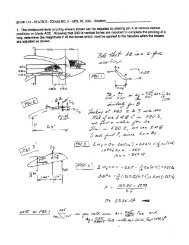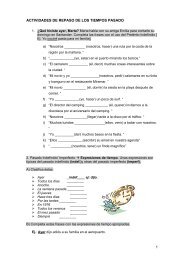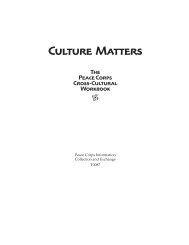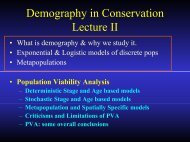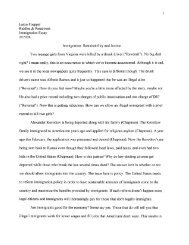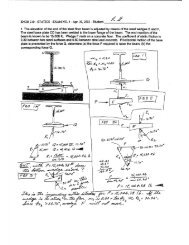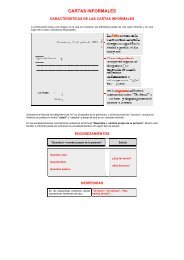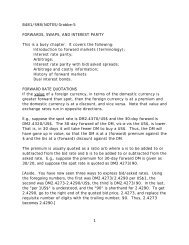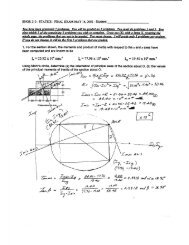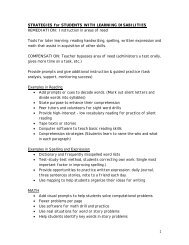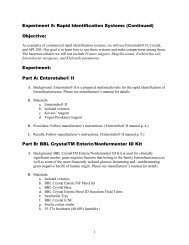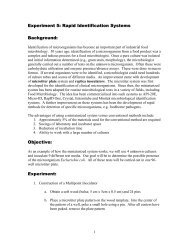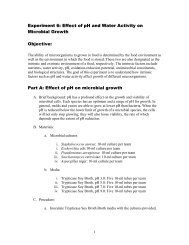Chapter 12 Questions 1. Which of the following is true of the ...
Chapter 12 Questions 1. Which of the following is true of the ...
Chapter 12 Questions 1. Which of the following is true of the ...
- No tags were found...
You also want an ePaper? Increase the reach of your titles
YUMPU automatically turns print PDFs into web optimized ePapers that Google loves.
25. All <strong>the</strong> <strong>following</strong> character<strong>is</strong>tics apply to <strong>the</strong> rhinoviruses exceptA) <strong>the</strong>y are DNA viruses with helical symmetry.B) <strong>the</strong>y belong to <strong>the</strong> Picornaviridae family <strong>of</strong> viruses.C) <strong>the</strong>y take <strong>the</strong>ir name from <strong>the</strong> Greek rhinos meaning nose.D) <strong>the</strong>y can cause head colds.E) <strong>the</strong>y can be transmitted by hand-to-hand contact.26. The scientific name for measles <strong>is</strong>A) rubella.B) variola.C) varicella.D) rubeola.27. Viruses that have spikes on <strong>the</strong>ir envelopes and contain both hemagglutinin andneuraminidase causeA) chickenpox.B) influenza.C) smallpox.D) <strong>the</strong> common cold.28. A respiratory d<strong>is</strong>ease which affects young children takes its name from <strong>the</strong> giant cells thatform from <strong>the</strong> fusion <strong>of</strong> infected culture cells. These giant cells are calledA) syncytia.B) Lipshutz bodies.C) Koplik spots.D) zoster cells.29. Even though a virus that causes th<strong>is</strong> d<strong>is</strong>ease has not yet been <strong>is</strong>olated, <strong>the</strong> course <strong>of</strong> <strong>the</strong>d<strong>is</strong>ease <strong>is</strong> suggestive <strong>of</strong> a viral agent. Th<strong>is</strong> d<strong>is</strong>ease <strong>is</strong>A) rubella.B) rubeola.C) molluscum contagiosum.D) Kawasaki d<strong>is</strong>ease.30. In adults, mumps virus represents a threat to <strong>the</strong> reproductive organs. In males, infection<strong>of</strong> <strong>the</strong> testes with mumps virus <strong>is</strong> calledA) oophorit<strong>is</strong>.B) papules.C) orchit<strong>is</strong>.D) pustules.Page 5



